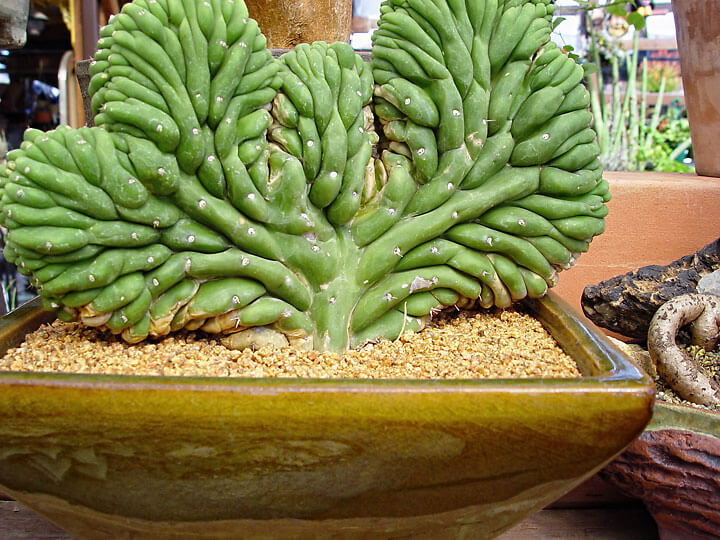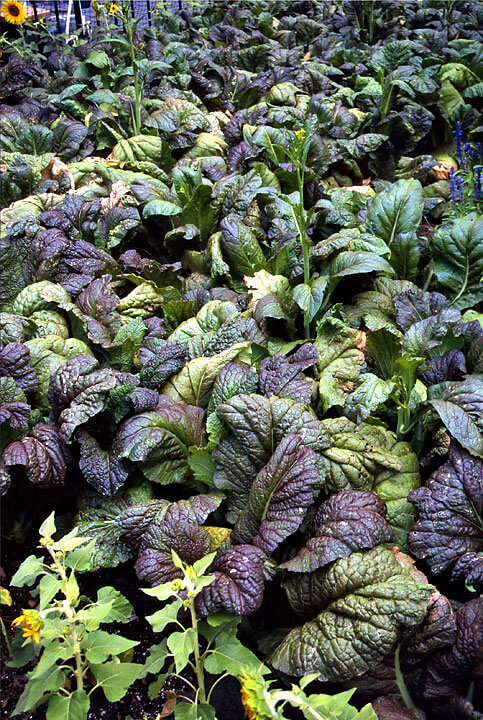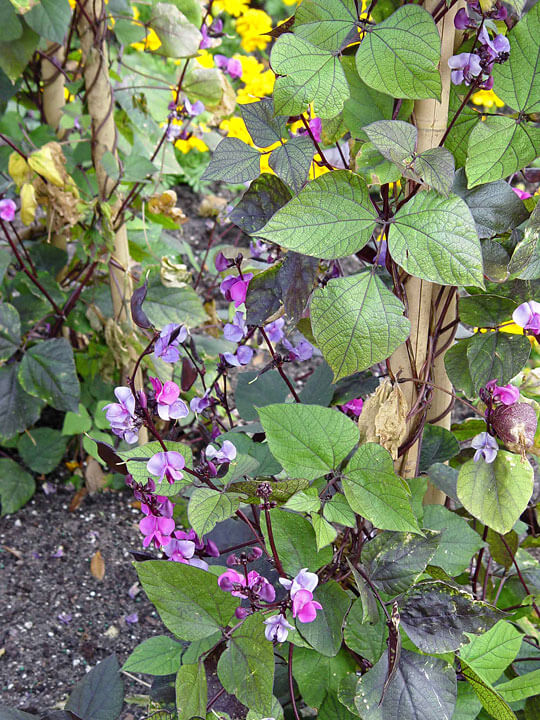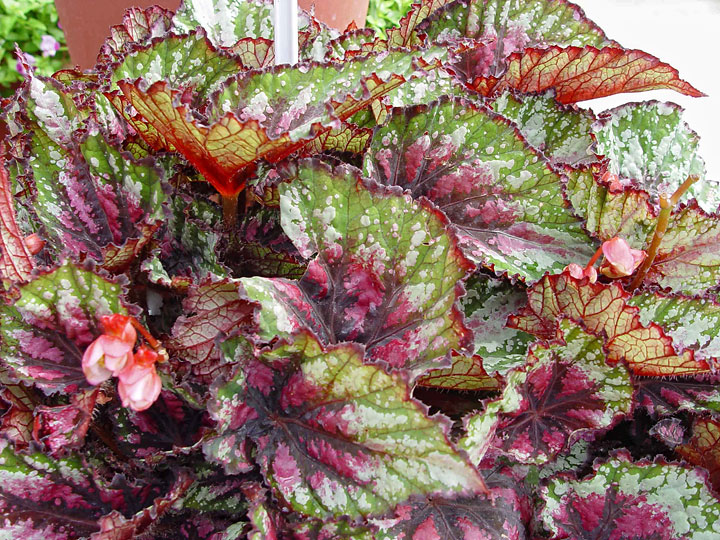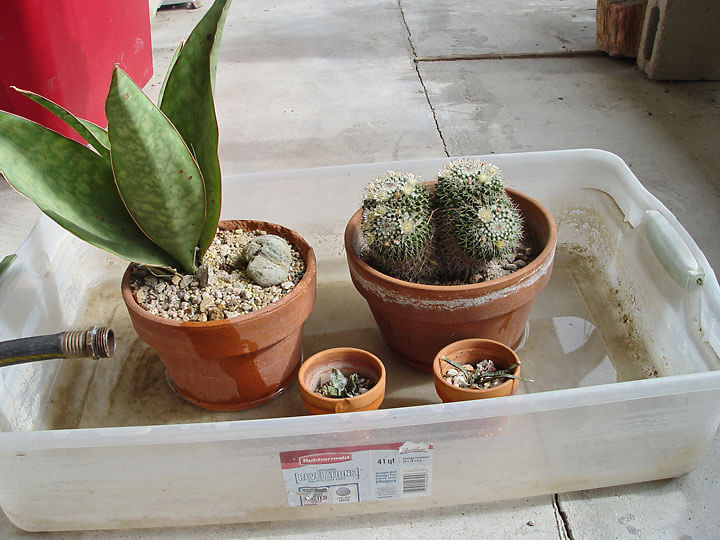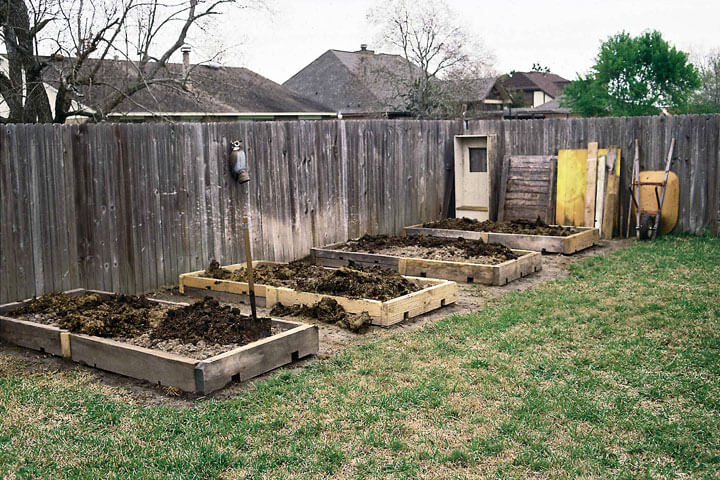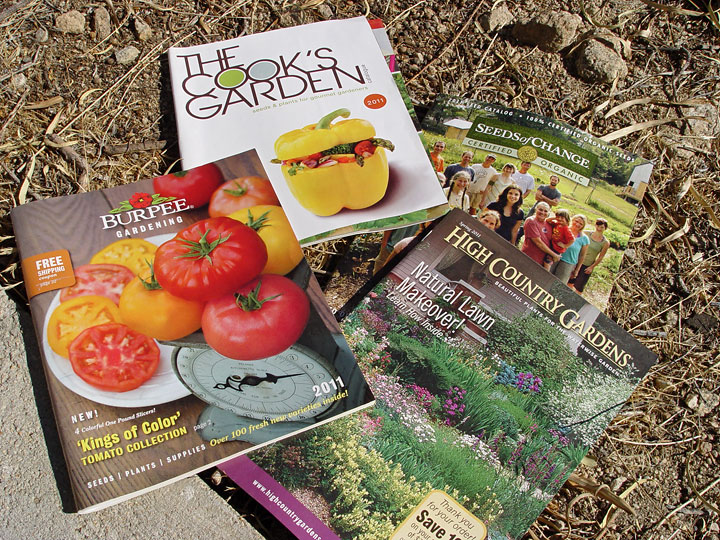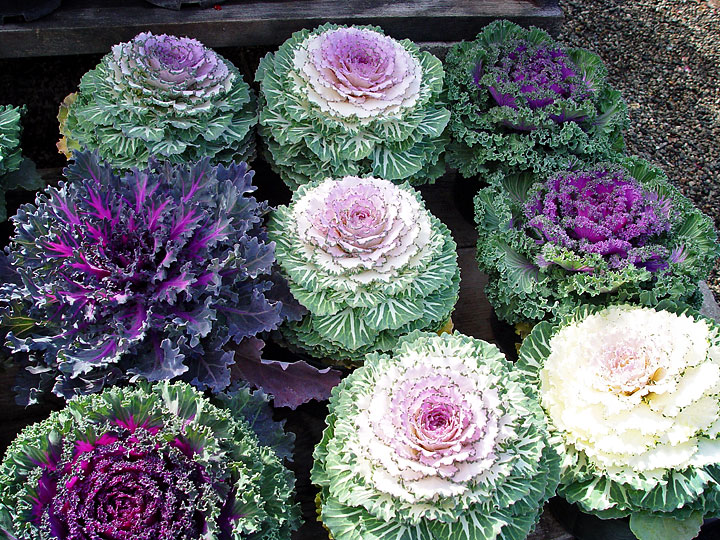
Lowly kale has a modern cousin that brings vivid color and food to early spring gardens. Flowering kale features dense and leafy heads in exotic purple and pink foliage as well as some odd thread-leaf forms that offer bold textural differences. You can blend kale with early season edible flowers like violas and calendula to make rainbow salads from a single potted composition. To make sure all edible leaves and petals are chemical-free, fill pots and troughs with Black Gold Waterhold Cocoblend Potting Soil before planting your kale. Then refresh the soil and replant with heat lovers when the kale bolts to flower around June.
Tag: Maureen Gilmer
Sterilize Containers for Planting Seeds
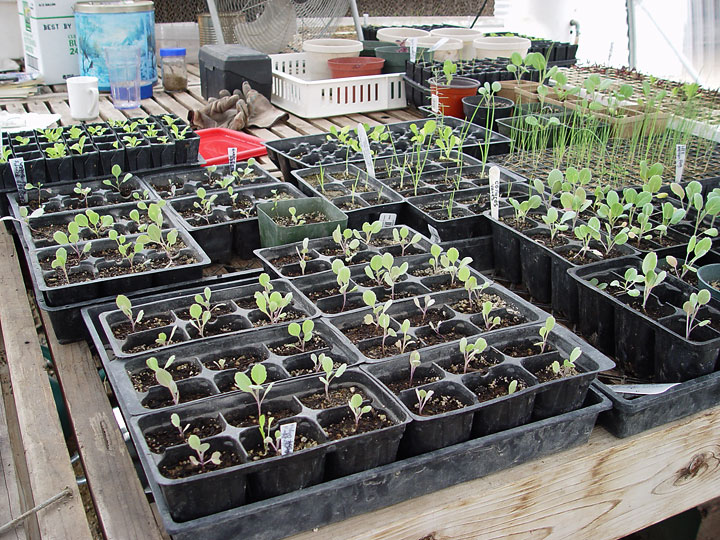
Whether you recycle nursery containers or reuse those from last year’s garden, make sure all are properly sterilized before planting seeds. Containers for planting seeds must always be clean as can be before planting!
Wash out all remnants of soil or organic matter sticking to the sides. Then dip each clean container into a bucket containing a 10% bleach solution to kill any remnants of prior diseases that could attack your seedlings. Wait until your clean, sterilized pots dry before adding OMRI Listed Black Gold Seedling Mix for a safe, sterile germination bed for your seeds. Not only does it do a great job, but this mix is approved for organic gardening!
Fast-Draining Soil for Succulents
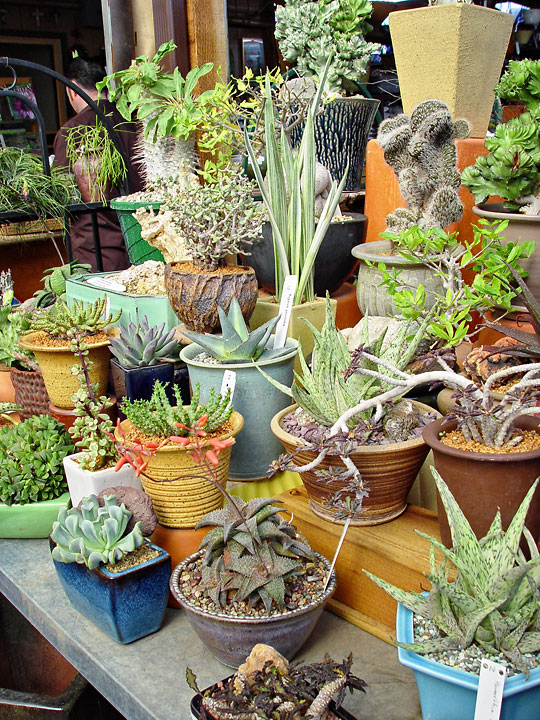
“Water applied must drain through the soil in fifteen seconds. If it fails to do so, the soil is too dense.” Such advice came to me decades ago from an old school nurseryman who specialized in cacti and succulents. Back then I thought this fifteen second law regarding fast-draining soil for succulents was ridiculous. After moving to the desert I learned what native cactus ground looks like. Water applied instantly vanishes into the soil. The nurseryman was right.
Today about half my collection of succulent plants are grown in small pots that come into an unheated south facing greenhouse for the winter. They are planted in Black Gold Cactus Mix, which drains within the fifteen second rule.
Soil is Everything
What many new succulent gardeners fail to understand is that, because cacti root differently, soil is everything. Standard plants go deep to catch ground moisture after the surface soil dries out. In the desert, cacti adapt to short periods of rainfall by spreading out shallow roots over a large area. These roots are capable of rapidly taking up water before it water drains through porous ground. This water is immediately stored in a succulent’s specialized tissues that hold it between widely spaced rain events. Shallow rooting is the reason why most cacti do best in low, wide pots, pans and bowls with large, open drain holes.
Cactus potting soil contains perlite, which looks like little white pieces of popcorn. While it is excellent for a root zone, it floats to the surface when I water. This and little bits of organic matter become entangled in the spines or settle in nooks and crannies of smooth surface skin. This is not only unsightly, it brings soil born bacteria in direct contact with the plant skin which may begin the rotting process.
To control these floaters, succulent aficionados apply a layer of fine gravel on top of the potting soil to keep it all in place when water is applied. White rock is popular for modern style containers with a more graphic look. I prefer washed gravel because it’s more naturalistic and blends with the rocks I find on walks to use as an accent stone. You can also use aquarium gravel for more unusual or brightly colored composition of succulent, pot and surface material.
Transplant Gently
Even the smallest damage to the skin of a plant can allow pathogens to enter and begin the process of internal cell damage which leads to softening rot. When transplanting cacti, I handle each plant carefully to avoid the slightest damage. Once removed from the original pot, I do not replant immediately but allow it to sit bare root in the open air for a few days. This lets any damaged roots or skin heal over or callus before repotting in new soil. Failing to do so brings soil pathogens into direct contact with a wound, which inevitably infects internal tissues.
When your soil is sufficiently well drained for cacti and gorgeous succulents, it becomes downright difficult to over water them. The warmer months of summer are their rapid growing season. During this growing season, water often, feed modestly, and above all, make sure you use Black Gold Cactus Mix to be sure it drains in about fifteen seconds.
Flapjack Kalanchoe Renewal
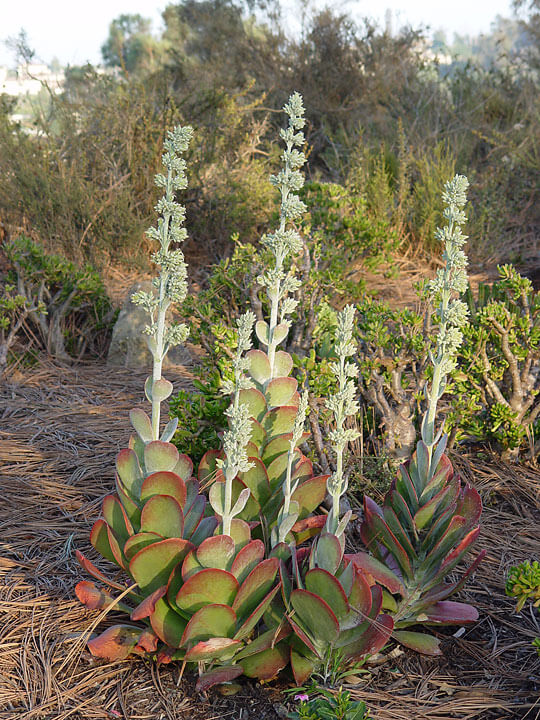 Flapjacks are so popular because of their strange, pancake-like leaves that grow in a “head” much like lettuce. By the end of summer each Kalanchoe thyrsifolia will bolt into a tall bloom stalk. This destroys its original tidy form, but don’t throw it away. This signals time for you to switch gears. Cut the plant back to just a few of inches of stem, then set in an out of the way location. Water and feed like normal until new sprouts appear. Each of these can be plucked and rooted in Black Gold Cactus Mix and washed sand for many new free individuals to populate much more of your garden next year.
Flapjacks are so popular because of their strange, pancake-like leaves that grow in a “head” much like lettuce. By the end of summer each Kalanchoe thyrsifolia will bolt into a tall bloom stalk. This destroys its original tidy form, but don’t throw it away. This signals time for you to switch gears. Cut the plant back to just a few of inches of stem, then set in an out of the way location. Water and feed like normal until new sprouts appear. Each of these can be plucked and rooted in Black Gold Cactus Mix and washed sand for many new free individuals to populate much more of your garden next year.
Keys to Developing Quality Garden Soil
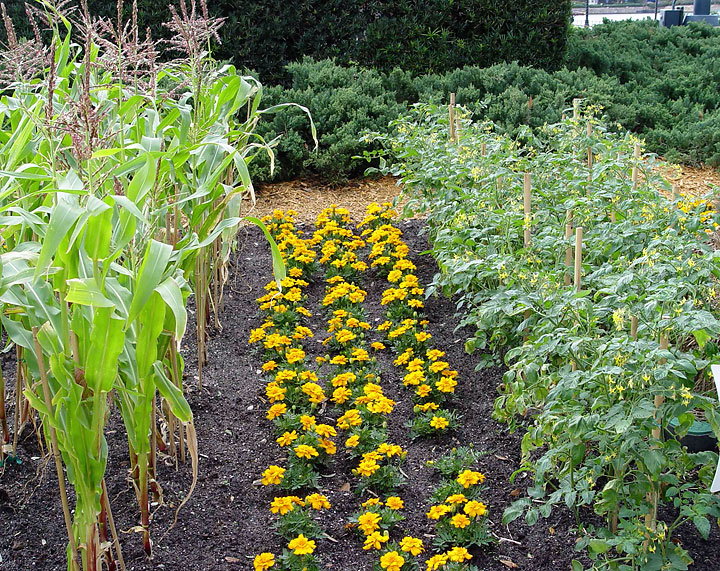
Whether you’re growing a family food garden or cultivating your favorite roses, the key to developing quality garden soil is always organic matter. This material is vital to plant life whether you are growing all organic, partially so, or using standard horticultural practices. Consider this the panacea to many problems that routinely plague home gardens during the growing season.
1. Organic matter is vital to improving soil structure. When mixed into clay soils it opens up the tiny particles of heavy clay soils to help them drain, and it helps to retain such drainage over time. This is also the case for adding organic matter to porous soils, which helps retain moisture like a million tiny sponges. This first step is accomplished with Black Gold Garden Soil for structural changes to soil for fantastic organic food and outstanding flowers.
2. Organic matter feeds microbes. When organic matter is partially decomposed and fine textured as is the case with fine textured Black Gold Garden Compost Blend, think of it as fuel for the huge populations of microorganisms that live in your soil. This invisible life force in topsoil includes fungi, bacteria and algae. They work symbiotically with your plants to help them grow faster and fruit more abundantly. Microbes in the soil are much like intestinal flora in the human body. Both are directly related to a healthy functioning immune system. Organic matter is Nature’s perfect pro-biotic.
3. Organic matter adds fertility. All soils contain nitrogen, phosphorus and potassium, but there’s not enough to feed a garden year after year. Make it a practice to fortify the soil each year with a healthy dose of Black Gold Soil Conditioner, which offers organic matter as well as slow release fertilizer in a single all-organic package. It contains plenty of compost for organic matter, but what boosts this amendment is a variety of natural nutrient sources such as kelp and guano. Kelp is vital to adding lesser known micro-nutrients thereby resolving any lack of trace elements. Where Soil Conditioner may not be available, combine Black Gold Garden Compost Blend with healthy additions of a starter and transplant fertilizer for similar results.
Remember: organic matter isn’t forever. Whether you add Black Gold Natural & Organic Soil Builder or Black Gold Garden Compost Blend to your garden, consider this your soil’s annual meal. Be generous to ensure the entire garden receives a good sized portion. During the growing season, this organic matter is broken down and used by both microbes and plants. Unless you replace it on a regular basis, your garden will not produce the same results the following year. Without regular applications, soil may revert to heavy clay, the microbe population will drop off and fertility declines.
Plan on two large feedings a year with smaller applications as needed in between. Apply the largest quantity in spring before planting time. Till it in before hand so microbes have time to increase their numbers prior to arrival of plants and seed. Use it again as a summer mulch around individual plants to retain moisture and keep roots cool. Then till in a final dose at the end of the year, which feeds microbes all winter.
Stick with Black Gold quality organic matter and you’ll find the keys to perfect garden soil in the palm of your hand. Whether it’s structure, fertility or to grow microbe populations, the result is always beneficial, your yields always abundant.
Spotlight On Fancy Leaf Begonias
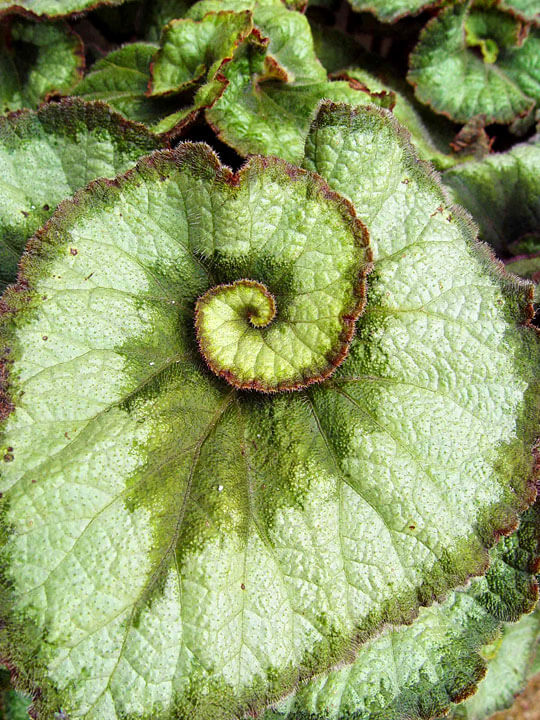
Begonias have always hovered in the shadows. They cluster beneath trees, in slotted shade of lath houses and on sun-deprived exposures. These unique plants, beloved by grandmothers everywhere, fell out of favor in the last few decades. Sure, I used Begonia richmondensis in hanging baskets and little wax begonias were a staple for shaded bedding areas, but these simply solved problems in shaded landscapes.
For effective begonia culture, choose Black Gold® African Violet Potting Soil.
Then I paid a visit to Ball Horticulture’s demonstration garden some years ago, and was so impressed by the fancy leaf forms displayed there. Instantly begonias were back on my radar! Colors, spots, stripes and textures make each of the many varieties a living work of art. This group has been rediscovered by haute designers who utilize colored foliage to spice up interiors. The plants have proven their love of fluorescent lights or a bright window, but never in direct sunlight. They also do nicely in sunrooms and greenhouses, then may come outdoors to accent sheltered patios and verandas during the summer.
Rex Begonias
Known as rex begonias, these are certainly the kings of indoor color. Up close they are eye catching and so unique that guests may mistake the living foliage for silk or well crafted plastic. They do bloom, but the flowers are small and not particularly showy. Foliage lovers promptly pinch the flower buds when they first appear so that growth energy is restricted to developing lots of bright new leaves.
Rex begonias originate with a fleshy rhizome that sits just below the surface of the soil. They are often sold online as a dormant bare root, which is the most economical way to acquire new varieties. This rhizome resembles that of bearded iris or fingerling potatoes, and must have well drained yet very moist conditions to thrive.
Repotting Rex Begonias
As the plants age, rhizome grows longer. Over time it may no longer fit in the pot, so the begonia must be repotted in a wider container that need not have greater depth as the roots remain shallow as well. The wider your pot, the larger a rex foliage mass becomes. Otherwise an overgrown rhizome may be divided into pieces and transplanted into numerous smaller containers. These make money saving gifts for friends and family. They also allow you to trade with other rex begonia lovers to enlarge your collections without spending a penny.
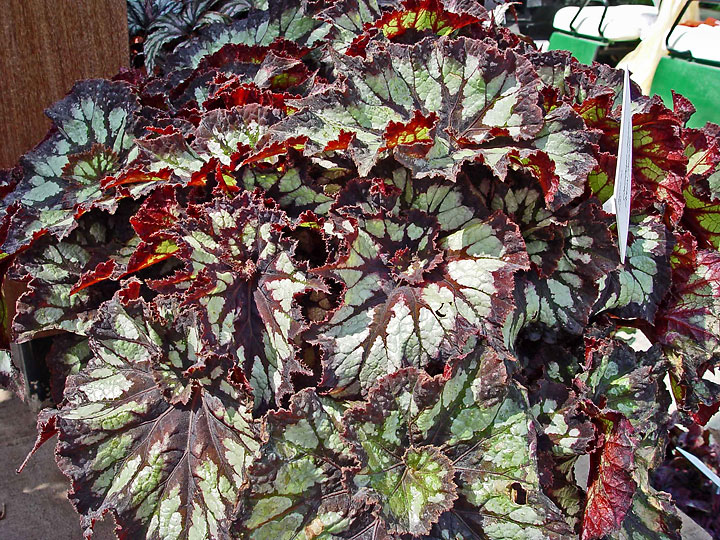
When repotting your begonias, use Black Gold African Violet Mix, which is formulated to resemble the soils beneath tropical forest canopies. Its texture, water holding ability and PH are ideal for these royal begonias. This soil also works nicely for other indoor or conservatory favorites such as fuchsias, flowering maples, Venus flytraps, pitcher plants and some terrestrial orchids.
If you don’t yet own a rex or any other exotic begonia, consider buying one this year to add a little zing to a bright kitchen or greenhouse window. Visit your local garden center to see the many fancy leaf forms as potted indoor plants. One of these gets your started with a single purchase, but be prepared to pay dearly. If you’d like more selection for less, explore begonia nurseries or summer bulb stores online. Begonias won’t be shipped until after risk of cold damage in transit is passed. Be sure to pick up a bag of Black Gold African Violet Mix in advance for prompt potting when the bare root rhizomes arrive in the mail.
Re-Hydrating Potted Plants
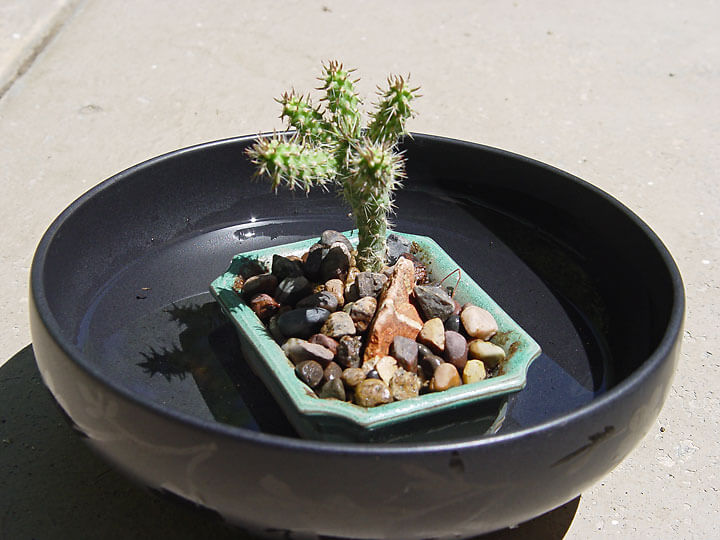
Watering potted plants is easy, but getting the whole root ball wet is hard. When you let the root ball dry out it shrinks away from the inner walls of the pot. If you pour on water, it goes straight down this gap and out the drain hole. The best way to rehydrate a plant in peat based potting soils wets the entire root ball, encouraging roots to travel into the center.
You can do it on the kitchen counter by filling a shallow container with a few inches of lukewarm water. Then set the potted plant right into the water. Let it sit until the surface of the potting soil is visibly wet. It may take at least an hour, then remove it to drain in the sink before returning to its place. Do this whenever a plant (indoor or out) has become overly dry to give the peat time to rehydrate completely.
Create a Seasonal Green Roof
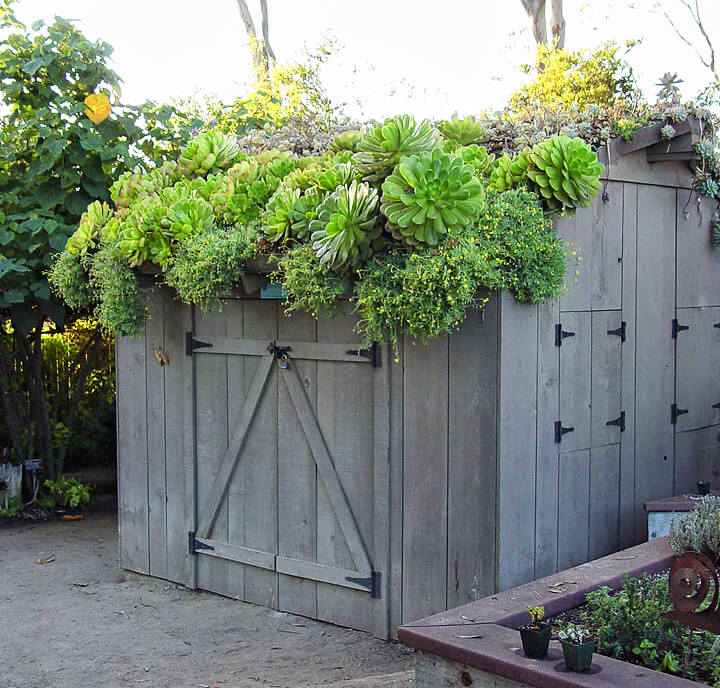
This isn’t a true green roof but it offers a whole new way to plant succulents for your summer garden. You can turn the roof of any garden shed into a new place to grow succulents. Simply apply a edging on top of the fascia, then spread a layer of thick plastic sheeting on top of the roofing material. Poke small drain holes where you want it to drain. On top of this spread shallow layer (4″ min.) of Black Gold Cactus Mix Potting Soil over the area to be planted. Moisten and pack it into place. Then plant your seedling succulents so they mature over the summer. When end of season rolls around, remove it all for winter and pot up the succulents to bring indoors.
Putting the Fruit Back in Fruit Trees
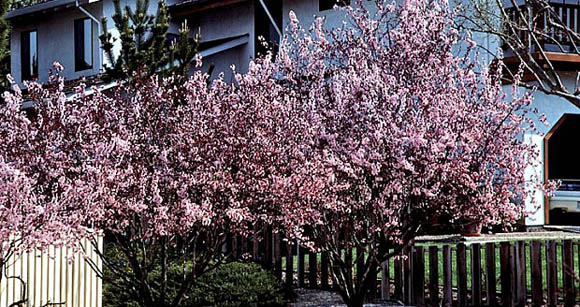
In the hoity toity world of landscape architecture, small flowering trees known as “accents” are often fruit trees bred to enhance the flowers but eliminate the fruit. The Japanese flowering cherry is a famous example in Washington DC. The Bradford pear has become a favorite white accent for urban gardens. But times have changed and my clients are all clamoring to get the fruit back without sacrificing beautiful flowers.
Continue reading “Putting the Fruit Back in Fruit Trees”
Soil, Seed and Supplies: Planning Your Garden
The Three S’s of Garden Planning boils down to: soil, seed and supplies.
One of the best things about backyard food gardening is that it demands we live by the seasons. Spring is for planning your garden. Summer demands maintenance. Autumn is the harvest. Most important of all is winter – the time for planning. Just as a landscape architect creates a garden on paper before it’s bid or built, it saves a lot of money and time to use January to plan your own food garden with research, notes and sketches. Do it right and you control your costs. You’ll save time to when plants and supplies will be on hand when you need them.
SOIL
Soil improvement is the most important part of organic gardening. For existing gardens, plan to add amendments and fertilizers to your soil every year to compensate for what last year’s garden drew out. Amendments should be thoroughly tilled in to feed microbes so their numbers do not decline. Some of the best choices are: Garden Compost Blend, Earthworm Castings, and Just Coir for more water retentive soils in dry climates.
SEED
Research vegetables for your garden via online or print catalogs. Measure the garden and sketch out a basic boundary to help you remember what you grew last year and where you’ll grow each new plant. This allows you to rotate your crops so that each square foot grows an entirely different kind of plant each year. It is well known that diseases build up to big problems when plants inhabit the same place year after year.
Gather sticky tabs, a yellow highlighter and a note pad before starting in on your seed catalogs. Your ability to mark interesting varieties and take notes is a big help since there are so many kinds of lettuce, peppers and squash to choose from. Ordering online is a lot easier because you won’t have to write out all those seed names on a form. Click and buy makes growing from seed fast and easy.
SUPPLIES
Order supplies you’ll need for growing from seed so they’re on hand when it’s time to start. Black Gold Seedling Mix offers the perfect sterile medium to germinate seed successfully in a flat topped with clear plastic cover to retain warmth and heat. When the seedlings put on their second leaves you’ll need to move them into individual small pots with more fertile Black Gold Natural and Organic Potting Soil to mature further until they are large enough to move outside. When it’s time to plant them into the garden you’ll need starter & transplant fertilizer to help them quickly adapt to their new summer home.


